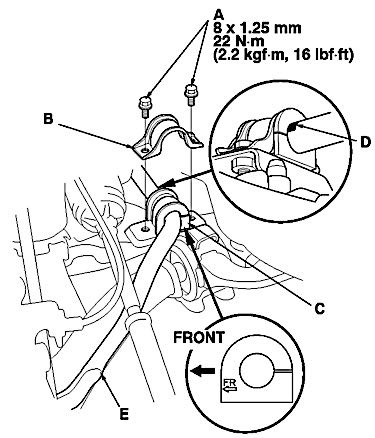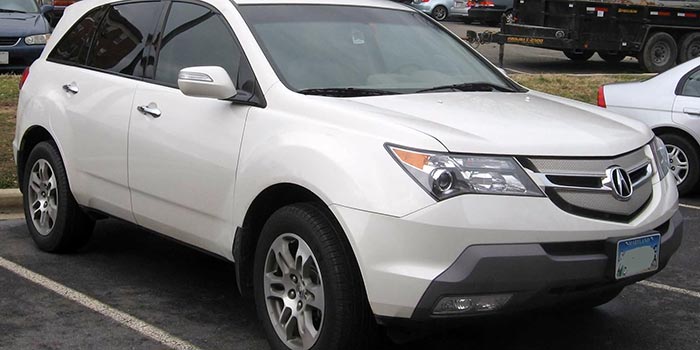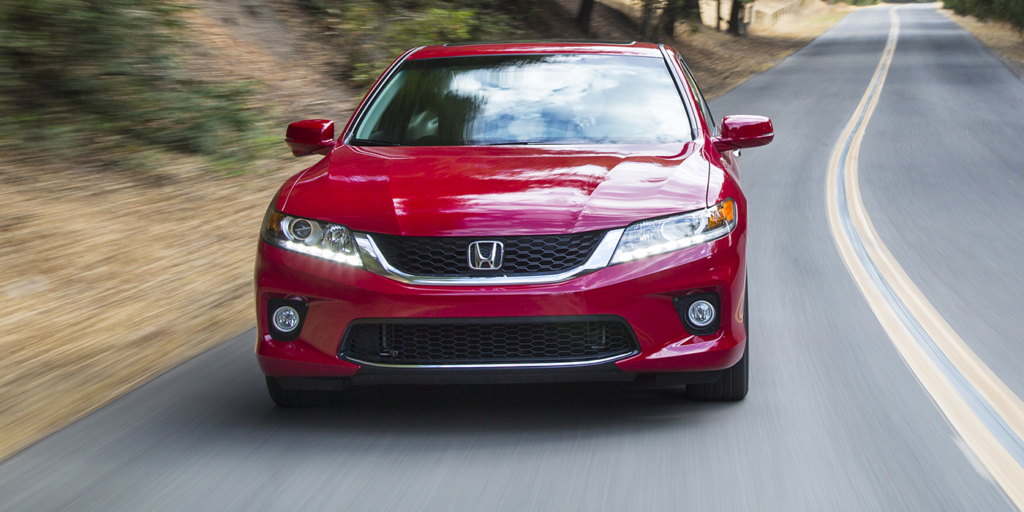 Vehicle:
Vehicle:
2009 Acura MDX
Procedure:
1. Raise the front of the vehicle and support it with safety stands in the proper locations.
2. Remove the front wheels.
3. Disconnect both stabilizer links from the stabilizer bar.
4. Remove the flange bolts (A) and the bushing holders (B), then remove the bushings (C).
Note: During installation, align the paint marks (D) on the stabilizer bar with the sides of the bushings.
5. Disconnect both tie-rod ball joints from the knuckle.
6. Remove the stabilizer bar (E) through the wheelwell opening on the passenger’s side.
7. Install the stabilizer bar in the reverse order of removal noting these items:
- Note the right and left direction of the stabilizer bar.
- Align the paint marks on the stabilizer bar with the sides of the bushings.
- Note the fore/aft direction of the bushing.
- Refer to stabilizer link removal/installation to connect the stabilizer bar to the links.
- Before installing the wheel, clean the mating surface of the brake disc and the inside of the wheel, then install the front wheels.
- Check the wheel alignment and adjust it if necessary.
Courtesy of MOTOLOGIC.














